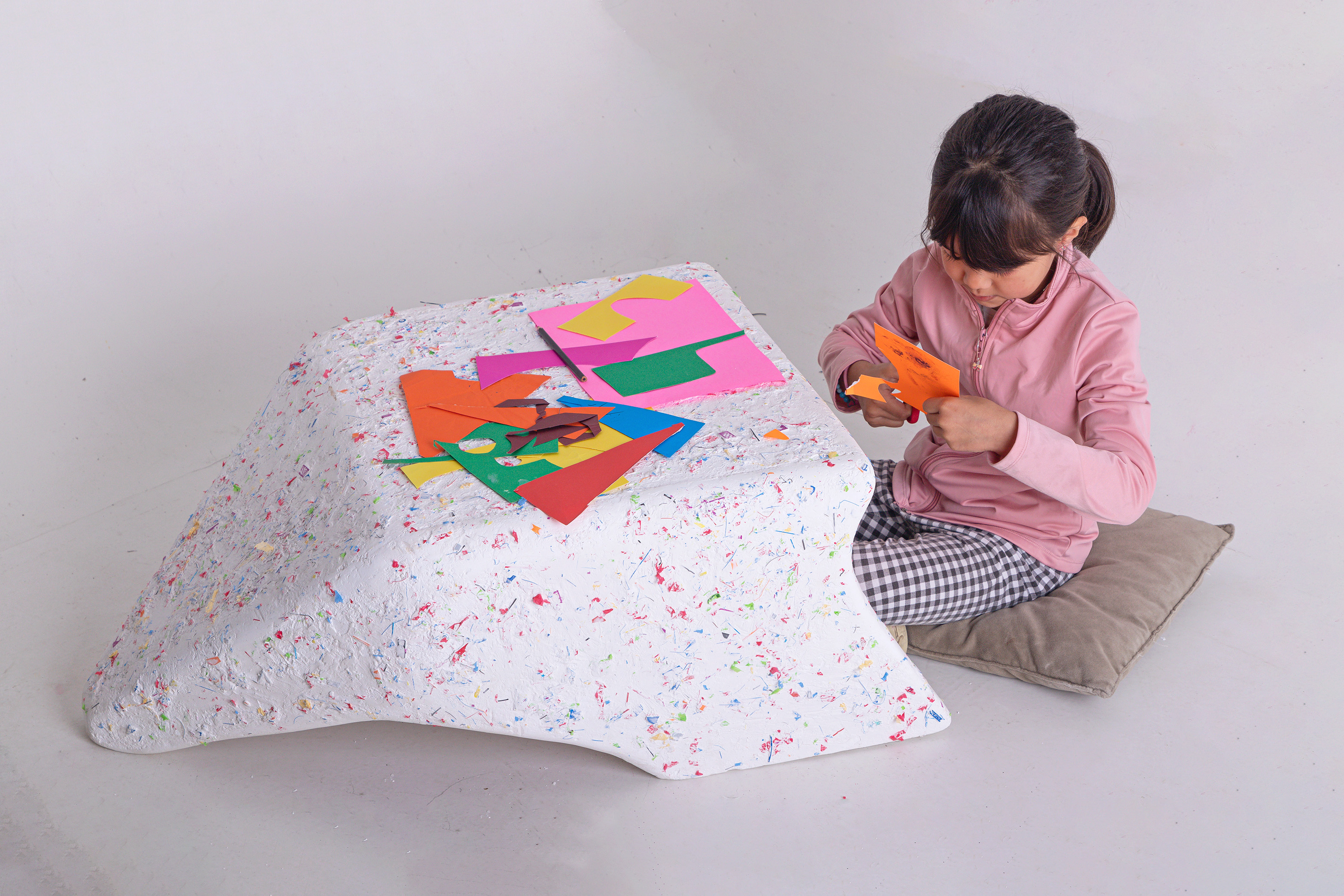2023 - New Star Award
Curitiba, Brazil

路易莎·多卡莫·吉拉迪·乌尔法利(Luisa do Carmo Girardi Urfali) 巴西/库里提巴
Luisa do Carmo Girardi Urfali — Curitiba, Brazil
作者介绍
Luisa Urfali, intern at the multi-award winning Furf Design Studio. Design student at PUCPR, with a specialization in Furniture and Product Design at the European Centre. In 2019, she won the international Shenzhen Design Awards with the Fala project, an urban furniture for suicide prevention. In 2021 she won the Brasil Design Awards with the Visi project, an adapter for children with low vision. Recently in 2021 she performed her first TEDx-The power of a speech. And in 2022 she was awarded Gold in the product design category by the Bornancini Prize. She believes that with Design it is possible to transform lives and take care of people.
Luisa Urfali,在多次斩获大奖的Furf设计工作室实习。巴拉那天主教大学设计专业学生,在欧洲中心主修家具和产品设计。2019年,她以预防自杀的城市家具Fala项目赢得深圳环球设计奖。2021年,她以Visi项目赢得了巴西设计奖,这是一个为低视力儿童设计的适配器。在2021年,她首次在“TEDx-演讲的力量”上进行了演讲。2022年,她被Bornancini奖授予产品设计类别的金奖。她相信通过设计可以改变人们的生活,照顾人们。
作品名称:RAY - Multifunctional Furniture That Promotes Sustainable Ethics Among Children
作品介绍
Ray is a multifunctional piece of furniture made of recyclable plastics taken from the coast of Santa Catarina in Brazil, with a structure inspired by the flapping of the wings of the Jamanta stingrays, which are a symbol of Latin America. Its objective is to be a transitional toy and creator of a 'potential space' for the child, where the paradox should not be judged, allowing the flow of his imagination with the possibilities of moving, rotating and rocking the furniture. Ray helps to preserve the mental and emotional health of the child in the transition from the family environment to living with other children in the school phase. In addition, the furniture brings a new aesthetic, with a new ethics of conscious consumption, in order to instinctively teach about environmental awareness and reduce consumerist impact. By 2040, the amount of polymers dumped into the oceans each year will triple, reaching 600 million metric tons. In 2019 Brazil was the fourth largest generator of plastic waste in the world (WWF). The children's toy industry is the biggest consumer of this material, which takes years to decompose and ends up in the oceans. Therefore, Ray is a toy made with plastics taken from the coast by several NGOs that already do this work and can now dispose of the residue in a more symbolic way. The piece of furniture instinctively introduces the concept of sustainable economy to children, who are potential agents for transforming environmental awareness. Being a transitional object, it helps schoolchildren to release the stress caused by their first contact away from home by providing what the psychoanalyst Winnicott calls potential space, where imagination flows freely. Ray provides each child's potential space and gives them the freedom to move, rotate and rock the toy, exploring its spaces and ways of using it as they wish. Freedom, fantasy and intuition in the act of playing provide the child's 'potential space', which, according to Winnicott, is a field of action full of creativity and plasticity. To emphasize the beauty of plastic, the shape of the piece of furniture is inspired by another potential space in life: the singular "flapping of the wings of the Jamanta ray". It is a versatile piece of furniture that can be used indoors and outdoors, made of recyclable plastic to give it a unique texture and a playful character, instinctively getting them used to this new sustainable aesthetic. Educating and rooting less materialistic practices has become difficult. Working from childhood on sustainable values through the complementarity between critical environmental education and family education. According to psychology, the most effective method and the best time to teach ethical values to a child is in childhood. In this sense, Ray provides children with various ways of interacting and attributing their own meaning to it. Thinking about relieving the stress of early latency phase changes. And instigating children's interest in products with new appearances and textures provides a future social impact: the conscious choice of paths and sustainable consumption.
Ray是一件由取自巴西圣卡塔琳娜海岸的可回收塑料制成的多功能的家具,其结构的灵感来自于拉丁美洲的象征Jamanta黄貂鱼拍打翅膀的样子。Ray旨在成为一个“过渡性玩具”和儿童"潜在空间"的创造者,在那里,孩子可以肆意地根据想象移动、旋转和摇晃家具。在从家庭环境过渡到与其他孩子一起生活的学校阶段,Ray有助于保护孩子的心理和情感健康。此外,Ray带来了一种新的美学,新的消费意识,潜移默化地教授环境意识和减少消费主义影响。到2040年,每年倾倒在海洋中的聚合物数量将增加两倍,达到6亿公吨。2019年,巴西是世界上第四大塑料垃圾产生国(世界自然基金会)。儿童玩具行业是这种材料的最大消费者,这种材料需要多年才能分解,最终进入海洋。因此,Ray是用由非政府组织从海岸上收集的塑料制成的玩具,以一种更有意义的方式来处理这些残留物。Ray将可持续经济的概念介绍给可能在未来转变环境意识的儿童。作为一种过渡性物品,它提供了精神分析学家温尼科特所说的“潜在空间”,让想象力自由流动,从而帮助孩子释放离家后第一次接触所带来的压力。Ray为每个孩子提供了潜在的空间,让他们自由地移动、旋转和摇动玩具,探索它的空间和使用它的方式。游戏行为中的自由、幻想和直觉提供了儿童的"潜在空间",在温尼科特看来,这是一个充满创造力和可塑性的行动领域。为了强调塑料的美,其结构的灵感来自于生活中另一个“潜在空间”:Jamanta黄貂鱼拍打翅膀的样子。这是一件由可回收塑料制成的多功能家具,室内和室外都可使用。Ray的制作材料赋予了它独特的质感和有趣的特性,让他完美契合了这种新的可持续美学。通过教育来根除或淡化孩子内心的物质主义变得越来越难,现在要通过关键的环境教育和家庭教育之间的互补,从小就树立可持续价值观。心理学认为,向孩子传授道德价值观的最有效方法和最佳时机是在儿童时期。因此,Ray为孩子们提供了各种各样互动的方式,并赋予了他们自己的意义。激发儿童对具有新外观和质地产品的兴趣为未来的社会带来了影响:有意识地选择道路和可持续消费。

In 2019 Brazil was the fourth largest generator of plastic waste in the world (WWF). The children's toy industry is the biggest consumer of this material, which takes years to decompose and ends up in the oceans. Therefore, Ray is a toy made with plastics taken from the coast by several NGOs that already do this work and can now dispose of the residue in a more symbolic way. The piece of furniture instinctively introduces the concept of sustainable economy to children, who are potential agents for transforming environmental awareness. Being a transitional object, it helps schoolchildren to release the stress caused by their first contact away from home by providing what the psychoanalyst Winnicott calls potential space, where imagination flows freely. Ray provides each child's potential space and gives them the freedom to move, rotate and rock the toy, exploring its spaces and ways of using it as they wish. Freedom, fantasy and intuition in the act of playing provide the child's 'potential space', which, according to Winnicott, is a field of action full of creativity and plasticity. To emphasize the beauty of plastic, the shape of the piece of furniture is inspired by another potential space in life: the singular "flapping of the wings of the Jamanta ray". It is a versatile piece of furniture that can be used indoors and outdoors, made of recyclable plastic to give it a unique texture and a playful character, instinctively getting them used to this new sustainable aesthetic. Educating and rooting less materialistic practices has become difficult. Working from childhood on sustainable values through the complementarity between critical environmental education and family education. According to psychology, the most effective method and the best time to teach ethical values to a child is in childhood. In this sense, Ray provides children with various ways of interacting and attributing their own meaning to it. Thinking about relieving the stress of early latency phase changes. And instigating children's interest in products with new appearances and textures provides a future social impact: the conscious choice of paths and sustainable consumption.


